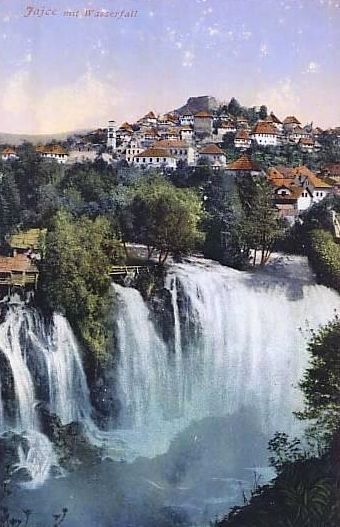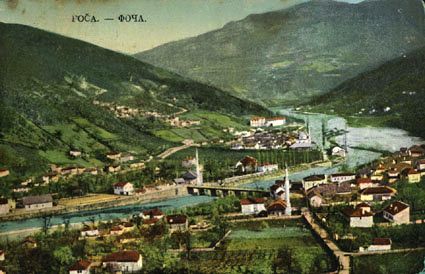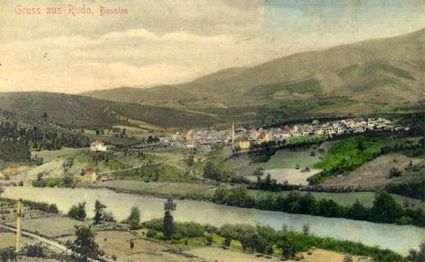The origin of waqf

The origin of waqf in Bosnia and Herzegovina is closely related to conquest of Bosnia and Herzegovina by Ottoman empire and establishment of system state power based on Shariah. Having prepared all necessary assumptions and taking advantage of new circumstances, Ottomans didn't have troubles conquering Balkan. Starting from twenties and thirties of 15th century, establishment of Ottoman's regime has gradually begun in Bosnia and Herzegovina. Sarajevsko krajište played a crucial role in that. After battle for Kosovo, left on his own, Vuk Branković had created vasal relation with sultan so on January 6 in 1392 he had to give Skopje to sultan, together with some of his towns including Bosanski drum. After that, Skopje became a capital of Ottoman's krajište and starting point for inbreak into Bosnia. In 1414. Ishak-beg came to the position of governor of Sarajevo krajište. His origin remains unknown. In 1439 his position of krajišnik was inherited by his sons, Barak and Isa-beg Ishaković. Ottoman's frontier from Skopje were the sultan's most advanced military-administrative representatives to the west. Being such, frontiers from Skopje played a crucial role in undermining and demolition of medieval Bosnia. Bosnia was constantly under their supervision so each of Ottoman's military or political action toward it started from Skopje. In this way, Ottomans were gradually establishing their regime encompassing area from Skopje to the medieval fortress Hodidjed - the area of later Sarajevo. During 1434-35., Ishak-beg had invaded Bosnia several times, under various excuses with or without invitations from local nobles. In period between 1435. and 1448., the Skopje frontiersmen had finally consolidated their basic positions in southeastern Bosnia. An example is the first mosque built in Ustikolina (Turhan Emin-beg's mosque) in the 1930s, which is certainly a sign that Muslims lived in the area. Final conquest of Hodidjed fortress in 1448. represents the basis of Ottoman's rule in Bosnia. Taking over the Hodidjed, sultan has eventually reached the keys for final conquest of Bosnia. In the occupied part of Bosnia, the Ottomans founded the Bosnian Krajina around 1455 as their first military unit on Bosnian soil. Ishak-beg Ishaković was at the head of krajište. Having undermined the Kingdom of Bosnia after several decades, Sultan Fatih, at the head of a large military force, had embarked on a final campaign in Bosnia in spring 1463. Despite their courage, few Bosnian crew could hardly resist such force.
 The fall of Jajce in 1463 stands for the final conquest of Bosnia by the Ottomans. The conquest of the whole of Bosnia lasted another 130 years and ended only with the fall of Bihać in 1529.
The fall of Jajce in 1463 stands for the final conquest of Bosnia by the Ottomans. The conquest of the whole of Bosnia lasted another 130 years and ended only with the fall of Bihać in 1529.
In this period of Ottoman state's expansion, the main concern of the state was the army and administration, while dealing with the major social issues such as cultural, educational, social and all others, was left to private initiative, mostly to the institution of endowments.
We can say that the role of waqf, especially in the earlier Ottoman period, was so significant that the development of cities could not even be considered separately from the historical role of waqf. Waqf buildings of various purposes, in which all the religious, educational, cultural and economic life of Muslims was concentrated, were considered as urban skeletons of all cities.
After Ottomans came to the founded area, special type of cities (kasaba) started to develop. Among the institutions that largely contributed to the development of cities is waqf. The only outcome of a state policy is a cities formation in conquered parts of territory, while awqaf conditioned by public needs, mostly strategic and communicational, appear to be the executor of that policy. That is conceivable, because Ottoman state was engaged by city formation, which other than being a center of government and cultural life, due to their craft economy also represented real workshops for the army.
Given the fact that in Ottoman period the establishment of the town usually began with the construction of mosques or dervish tekkes, in terms of who built the earliest cultural object in a certain location, which will become town, three variants can be observed: 1. private-dervish, 2. ruler (state) and 3. private (feudal).
1.The significant contribution to the spread of Islam in Ottoman period was made by dervish orders. As a part of army, they raised their tekkes (zawiya), which were temporarily functioning as turnover and inn. We can say that dervishes played a significant role in original spread of Islam in our region too, as well as the establishment of some settlements by raising their tekkes. That component is especially evident in Eastern Rumelia (Bulgaria and Greece) and in Macedonia where Ottomans settled a significant part of their population. In the areas that were just conquered, at the beginning of XV century, dervishes started to raise their tekkes that functioned as inn, on convenient waypoints. At first, dervishes established their tekkes according to their own will but then later sultan gave them certain land for their maintenance which they bequeathed to the zawiyas to establish their waqfs. There are facts saying that dervish component was visible in our region.
Strong premises claim that Sarajevo had the similar beginning. Tombstones of two dervishes from 1462 support this claim as well as the first endowment charter of Ishak – beg Ishaković, the commander of Bosnian Krajište. Those tombstones of Ayni - dede and Shamsi - dede were originally placed next to the small mosque with wooden minaret, near today's Hygiene institute. After the mosque has been removed, tombstones were replaced into the harem of Ali-pasha Mosque, where they remained. According to the date of their death, it is evident that they lived before Ishak-beg composed the first endowment charter and that they were founders of the first zawiya.
The second example that supports this variant is foundation of the original zawiya in Rogatica, also known as Čelebi-Pazar. The zawiya was founded by dervish named Muslihudin, who got the land for that zawiya from Ishak – beg Ishaković's son and the leader of that area, Muhamed Čelebi. It is evident that Mehmed Čelebi and his father protected dervishes, to whom they themselves belonged.
The third example is Visoko, where Bosnian sanjak-bey, Ajas-beg raised a tekke in 1489. as the first Muslim cultural object.
Though significant, this dervish component was simple, weak and ephemeral; it soon fell under the shadow of Islamic line, because after tekkes, considerably important and significant waqf objects, such as mosques and masjids were raised.
2. The second variant in the formation of urban settlements and thus in the establishment of the original waqfs consisted in the fact that at various points where the towns were formed, as the first significant waqf buildings, the so-called "imperial mosques" were built and were in fact state-owned.
 Thus, from the seventies of the XV century to the seventies of the XVI century, i.e. from the reign of Mehmed II till the end of the reign of Suleiman II, 25 imperial mosques were built in Bosnia, setting the foundations of the following towns: Sarajevo and Zvornik before 1481, Foča, Rogatica, Višegrad, Srebrenica, Travnik, Prusac, Prozor and Nevesinje before 1512, Knežina, Doboj, Stolac before 1520, Jajce, Banja Luka, Donja Tuzla, Bijeljina, Gradiška, Kamengrad, Obarci, Glamoč, Dobrun, Blagaj near Mostar and Jezero near Jajce before 1566. Later, on river Una, by building Ahmet's mosque, today's Kulen-Vakuf was founded (1603.-1617.) All of these cases are about mosques which were built much earlier, representing the beginning of urban formation of the aforementioned towns. There are cases where two imperial mosques were built at one place. For instance, in Zvornik where, other than Fatih Mosque in suburbs, Suleymaniye Mosque was built, which in fact represented the beginning of urban formation of today's Zvornik. In Rogatica also, beside Bayezid Mosque, the Selim II Mosque was built in 1573. Same goes for Jajce, where other than Sulaymaniyah Mosque, masjid was built in the name of same sultan. There is more evidence that these mosques were in fact state-owned than sultan. They were not maintained from their own waqf, instead they were built by sultan's orders and the officials from those mosques were paid from state's funds.
Thus, from the seventies of the XV century to the seventies of the XVI century, i.e. from the reign of Mehmed II till the end of the reign of Suleiman II, 25 imperial mosques were built in Bosnia, setting the foundations of the following towns: Sarajevo and Zvornik before 1481, Foča, Rogatica, Višegrad, Srebrenica, Travnik, Prusac, Prozor and Nevesinje before 1512, Knežina, Doboj, Stolac before 1520, Jajce, Banja Luka, Donja Tuzla, Bijeljina, Gradiška, Kamengrad, Obarci, Glamoč, Dobrun, Blagaj near Mostar and Jezero near Jajce before 1566. Later, on river Una, by building Ahmet's mosque, today's Kulen-Vakuf was founded (1603.-1617.) All of these cases are about mosques which were built much earlier, representing the beginning of urban formation of the aforementioned towns. There are cases where two imperial mosques were built at one place. For instance, in Zvornik where, other than Fatih Mosque in suburbs, Suleymaniye Mosque was built, which in fact represented the beginning of urban formation of today's Zvornik. In Rogatica also, beside Bayezid Mosque, the Selim II Mosque was built in 1573. Same goes for Jajce, where other than Sulaymaniyah Mosque, masjid was built in the name of same sultan. There is more evidence that these mosques were in fact state-owned than sultan. They were not maintained from their own waqf, instead they were built by sultan's orders and the officials from those mosques were paid from state's funds.
No endowment charter related to the imperial mosques in Bosnia has been found, and none of the endowment charter of mentioned sultans mentions imperial mosques.
According to registers, the employees of Sarajevo Imperial Mosque such as: imams, khatibs and muezzins were timariots, while other expenses like lightening, floor cloth and repairs were financed form state funds. The preserved note from Bayezid Mosque in Prusac depicts the procedure of the construction of the imperial mosques. It is translated as follows: „By order of sultan Bayezid, Skender-pasha raised a mosque in 893/1498 and qadi from Akhisar rebuilt it in 1010/1601. “From this note, it is obvious that local officials were building mosques by the orders of the sultans, because that was one of the political ways to reach the set goal of conquering and importing the Ottoman state system. Everything was in accordance with wider interests of Ottoman empire because cities were representing the basic support of the state back then. Thus, when in certain conditions a local feudal lord was not found at certain points to improve the development of the town from his own funds by establishing a waqf, the state intervened and promoted the development of these areas.
3. Third variant of city or waqf establishment in Bosnia were local feudal lords. This way of city establishment was conditioned by various of needs such as road security and traffic which were consolidated by qadi. In situations as such, some local feudal lords, who usually worked at sultan's palace in Istanbul, guided by their moral and economical motives, as their waqf, raised not only mosques but the whole complex of buildings. So, in relatively short period of time, cities with essential facilities, founded by only one founder started coming up. We have several examples of cities established in this way - first important waqfs in Bosnia.
Today's Mrkonjić Grad or Varcar-Vakuf has been founded in this way. It was founded by Mehmet-beg's son, Hajji Mustafa-aga, who was born in the same area and who worked as an administrator at Sultan's palace, by the end of 16th century. As his endowment charter shows, around 1529. he raised many buildings: mosque, maktab, caravanserai, inn with 20 rooms, 24 retail shops and one bakery oven – altogether forming a small town.
 The small town Rudo on Lim, founded by Mustafa-beg Sokolović around 1555, was created in the similar way. As well as the town Glasinac near Sokoc, which was founded by some local functionary haji Ibrahim-aga in 1589. who also raised mosque, caravanserai, maktab and many retail shops. In the same way he founded a whole sequence of other towns and significant waqfs in Bosnia. This third variant is crucial in waqf origin because in this way the most important and most remarkable waqfs in Bosnia emerged.
The small town Rudo on Lim, founded by Mustafa-beg Sokolović around 1555, was created in the similar way. As well as the town Glasinac near Sokoc, which was founded by some local functionary haji Ibrahim-aga in 1589. who also raised mosque, caravanserai, maktab and many retail shops. In the same way he founded a whole sequence of other towns and significant waqfs in Bosnia. This third variant is crucial in waqf origin because in this way the most important and most remarkable waqfs in Bosnia emerged.
From the aforementioned, it is evident that the first waqfs in Bosnia emerged as one of the most effective ways to establish the territorial integrity of the Ottoman state in Bosnia.
That was the only possible way to establish economically strong towns in areas of Bosnia which were conquered by Ottomans. Those cities were in service of Ottoman state, tightly stationed in Bosnia, which had very significant role in protecting Ottoman empire from northern neighbors. Among other things, the establishment of waqf had also significant role in islamization of population, because waqf as an Islamic institution is based upon Shariah. With their establishment, religious objects like mosques - one of the basic symbols of Ottoman state were raised.
If we analyze the course of the waqf emergence, we can see that they experienced the actual growth in the first half of the XV and XVI century when the most prominent waqfis like Ishak – beg Ishaković, Gazi Husrev – beg, Rustem – pasha Opuković, Mehmed – pasha Sokolović, Ferhad – beg Sokolović and others appeared. Despite all the hardships and constraints inflicted upon the waqf property, some of the most famous benefactor's waqfs are still preserved and serve their purpose.